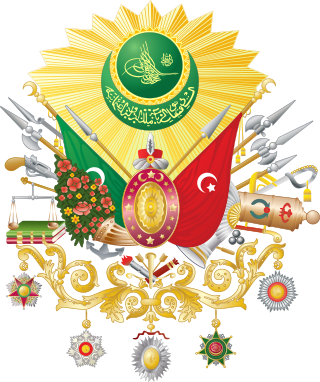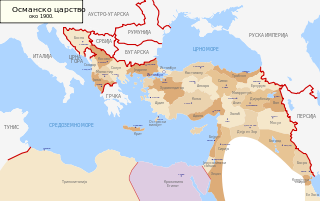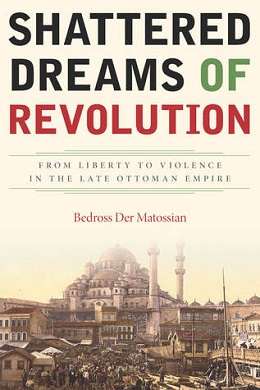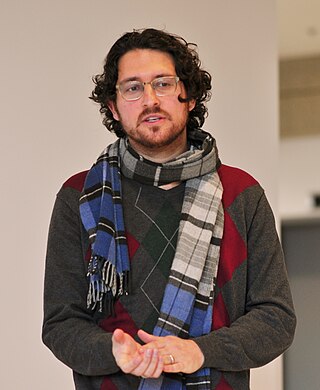Related Research Articles

The Young Turks formed as a constitutionalist broad opposition-movement in the late Ottoman Empire against the absolutist régime of Sultan Abdul Hamid II. The most powerful organization of the movement, and the most conflated, was the Committee of Union and Progress, though its goals, strategies, and membership continuously morphed throughout Abdul Hamid's reign. By the 1890s, the Young Turks were mainly a loose and contentious network of exiled intelligentsia who made a living by selling their newspapers to secret subscribers.

The historiography of the Ottoman Empire refers to the studies, sources, critical methods and interpretations used by scholars to develop a history of the Ottoman Dynasty's empire.

The Young Turk Revolution was a constitutionalist revolution in the Ottoman Empire. Revolutionaries belonging to the Internal Committee of Union and Progress, an organization of the Young Turks movement, forced Sultan Abdul Hamid II to restore the Constitution, recall the parliament, and schedule an election. Thus began the Second Constitutional Era.

Beit ed-Dine, also known as Btaddine is a small town and the administrative capital of the Chouf District in the Mount Lebanon Governorate in Lebanon. The town is located 45 kilometers southeast of Beirut, and near the town of Deir el-Qamar from which it is separated by a steep valley. It had 1,613 registered voters in 2010 and its inhabitants are predominantly Christians from the Maronite, Melkite and Greek Orthodox denominations. Beit ed-Dine's total land area consists of 244 hectares and its average elevation is 860 meters above sea level.

Hasan Fehmi Bey was an Ottoman journalist, who was the editor-in-chief of Serbestî, an Ottoman newspaper owned by Mevlanzade Rifat Bey, in which he wrote articles against the newly emerging Committee of Union and Progress (CUP).
Donald George Quataert was a historian at Binghamton University. He taught courses on Middle East/Ottoman history, with an interest in labor, social and economics, during the early and modern periods. He also provided training in the reading of Ottoman archival sources.

Early general elections were held in the Ottoman Empire in April 1912. The ruling Committee of Union and Progress won 269 of the 275 seats in the Chamber of Deputies, whilst the opposition Freedom and Accord Party only won six seats, a victory widely deemed fraudulent and won through intimidation.

This is a bibliography of notable works about the Ottoman Empire.

"They Can Live in the Desert but Nowhere Else": A History of the Armenian Genocide is a book by Ronald Grigor Suny about the Armenian genocide, published by Princeton University Press in 2015. The book was praised as an accessible work that provides the academic consensus on why and how the Armenian genocide occurred.

Shattered Dreams of Revolution: From Liberty to Violence in the Late Ottoman Empire is a 2014 book by Bedross Der Matossian, published by Stanford University Press. It discusses the Young Turk Revolution of 1908 and related aspects and contains six chapters.
Bibliography of the Armenian genocide is a list of books about the Armenian genocide:
Fatma Müge Göçek is a Turkish sociologist and professor at the University of Michigan. She wrote the book Denial of Violence in 2015 concerning the prosectution of Armenians in the Ottoman Empire and Turkey, for which she received the Mary Douglas award for best book from the American Sociological Association. In 2017, she won a Distinguished Faculty Achievement Award from the university.

Kemalist historiography is a narrative of history mainly based on a six-day speech delivered by Mustafa Kemal [Atatürk] in 1927, promoted by the political ideology of Kemalism, and influenced by Atatürk's cult of personality. It asserts that the Republic of Turkey represented a clean break with the Ottoman Empire, and that the Republican People's Party did not succeed the Committee of Union and Progress (CUP).
Ryan Gingeras is a professor at the Naval Postgraduate School in California and a historian of the late Ottoman Empire.
David Gaunt is a historian and professor at Södertörn University's Centre for Baltic and East European Studies and Member of Academia Europaea. Gaunt's book about the Assyrian genocide, Massacres, Resistance, Protectors, was described as "the most important book that has been published in recent years".

Differing views of what caused the Armenian genocide include explanations focusing on nationalism, religion, and wartime radicalization and continue to be debated among scholars. In the twenty-first century, focus has shifted to multicausal explanations. Most historians agree that the genocide was not premeditated before World War I, but the role of contingency, ideology, and long-term structural factors in causing the genocide continues to be discussed.

Devin E. Naar is the Isaac Alhadeff Professor in Sephardic Studies at the University of Washington. He is descended from Greek Sephardic Jews who emigrated to the United States in the 1920s.
Hilmar Kaiser is a German historian who has a PhD from European University Institute, Florence, and works at Yerevan State University.
Robert Dankoff is Professor Emeritus of Ottoman & Turkish Studies, Department of Near Eastern Languages and Civilizations at the University of Chicago.

Below is an outline of Wikipedia articles related to the Greek genocide and closely associated events and explanatory articles. The topical outline is accompanied by a chronological outline of events. References are provided for background and overview.
References
- ↑ "312620720".
- ↑ Der Matossian, Bedross (25 August 2020). "A message from the President of the Society for Armenian Studies". Journal of the Society for Armenian Studies. 27 (1): 1–2. doi: 10.1163/26670038-12342703 .
- ↑ Mirror-Spectator, The Armenian (30 September 2020). "I.B. Tauris Launches a New Book Series titled Armenians in the Modern and Early Modern World". The Armenian Mirror-Spectator. Retrieved 8 May 2021.
- ↑ Gutman, David (2015). "Bedross Der Matossian. Shattered Dreams of Revolution: From Liberty to Violence in the Late Ottoman Empire. Stanford: Stanford University Press, 2014, xii+249 pages". New Perspectives on Turkey. 53: 224–227. doi:10.1017/npt.2015.27. S2CID 148295881.
- ↑ Klein, Janet (2015). "Review of Shattered Dreams of Revolution: From Liberty to Violence in the Late Ottoman Empire". International Journal of Middle East Studies. 47 (4): 821–824. doi:10.1017/S0020743815001075. ISSN 0020-7438. JSTOR 43998050. S2CID 164629593.
- ↑ Schlaepfer, Aline (2016). "Der Matossian, Bedross: Shattered Dreams of Revolution: From Liberty to Violence in the Late Ottoman Empire" (PDF). Asiatische Studien - Études Asiatiques. 70 (4): 1445–1448. doi:10.1515/asia-2016-0038. S2CID 21747135.
- ↑ Shattered Dreams of Revolution: From Liberty to Violence in the Late Ottoman Empire Ahmad, Feroz.International Journal of Turkish Studies; Madison Vol. 21, Iss. 1/2, (2015): 211-213.
- ↑ Cheterian, Vicken (2015). "Shattered dreams of revolution: from liberty to violence in the late Ottoman empire. By Bedross Der Matossian". International Affairs. 91 (4): 876–878. doi: 10.1111/1468-2346.12350 .
- ↑ Cora, Yaşar Tolga (2016). "Bedross Der Matossian, Shattered Dreams of Revolution: From Liberty to Violence in the Late Ottoman Empire". Études arméniennes contemporaines (7): 118–123. doi: 10.4000/eac.1043 .
- ↑ Gratien, Chris (2016). "Review of SHATTERED DREAMS OF REVOLUTION: FROM LIBERTY TO VIOLENCE IN THE LATE OTTOMAN EMPIRE". The Arab Studies Journal. 24 (1): 300–304. ISSN 1083-4753. JSTOR 44746860.
- ↑ Yosmaoğlu, İpek Kocaömer (2016). "Bedross Der Matossian. Shattered Dreams of Revolution: From Liberty to Violence in the Late Ottoman Empire ". The American Historical Review. 121 (4): 1393–1394. doi:10.1093/ahr/121.4.1393.
- ↑ Masters, Bruce (2018). "Shattered Dreams of Revolution: From Liberty to Violence in the Late Ottoman Empire By Bedross Der Matossian". Journal of Islamic Studies. 29 (2): 274–277. doi:10.1093/jis/ety006.
- ↑ Taglia, Stefano (2015). "Shattered Dreams of Revolution: From Liberty to Violence in the Late Ottoman Empire, by Bedross Der Matossian: Stanford: Stanford University Press, 2014. Pp. xii + 249, notes, index, 6 illustrations. £57/$85 (cloth); £16.99/$24.95 (paper). ISBN 9780804791472; 9780804792639". Middle Eastern Studies. 51 (6): 1032–1037. doi:10.1080/00263206.2015.1049159. S2CID 151860472.
- ↑ Hanioğlu, M. Şükrü (2015). "Shattered Dreams of Revolution: From Liberty to Violence in the Late Ottoman Empire. By Bedross Der Matossian. Stanford, CA: Stanford University Press, 2014. 264 p. $85.00 cloth, $24.95 paper". Perspectives on Politics. 13 (3): 889–890. doi:10.1017/S1537592715001929. S2CID 152172560.
- ↑ Fortna, Benjamin C. (2015). "Bedross Der Matossian: Shattered Dreams of Revolution: From Liberty to Violence in the Late Ottoman Empire. xii, 249 pp. Stanford, CA: Stanford University Press, 2014. $24.95. ISBN 978 0 8047 9263 9". Bulletin of the School of Oriental and African Studies. 78 (3): 623–624. doi:10.1017/S0041977X15000580. S2CID 162832048.
- ↑ Mazur, Nadia (2001). "Der Matossian, Bedross: Shattered Dreams of Revolution: From Liberty to Violence in the Late Ottoman Empire, Stanford, Stanford University Press, 2014". Rey Desnudo (in Spanish) (12): 38–43. ISSN 2314-1204.